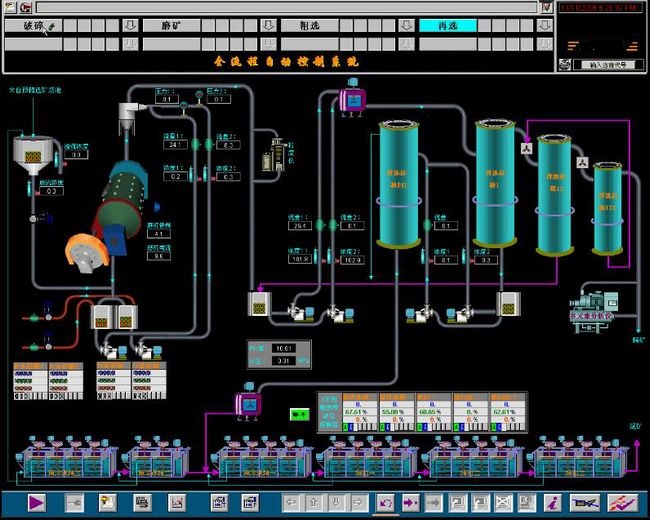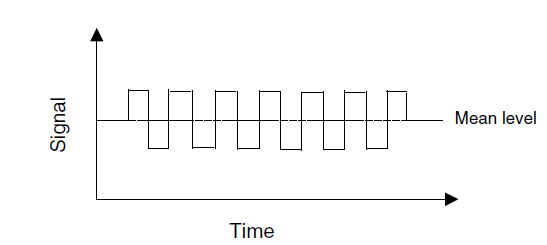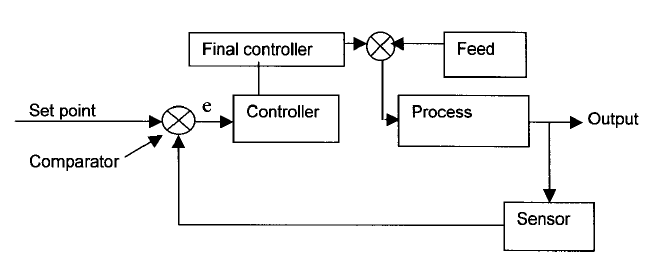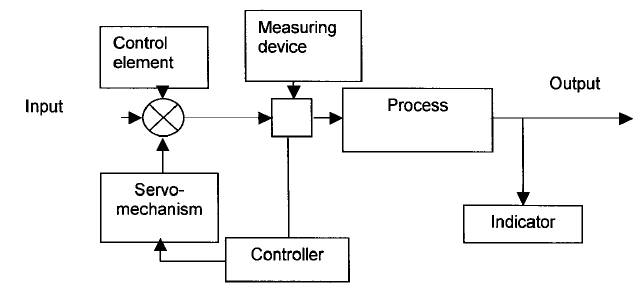In mineral processing plant, the process control is important and necessary. Process control systems can be divided into two major groups:
1. Continuous control that involve monitoring and controlling of events continuously,
2 Digital controls that involve the use of computers and microprocessors.

Controlling, say the level of a flotation tank which is being filled continuously and from which the pulp is withdrawn continuously, can be done crudely by observing the rise (or fall) of level and restoring it manually by manipulating valves and increasing or decreasing the input flow rate to the tank. Such an on-off method would result in an unsteady profile of level (Fig. 1). This situation is unacceptable in most mineral processing circuits. To solve the problem instruments have been devised and strategies developed to minimize the fluctuations in level. Automatic controllers have therefore being devised which serve to control flow rates, density of slurries, tank and bin levels, pump operations and almost all unit operations like crushers, ball mills, screens, classifiers, thickeners, flotation vessels and material handling systems.

Fig.1. Manual on-off control of flotation cell level.
The two basic control strategies or modes of these controllers are known as:
1. feed back control system, and
2. feed forward control system.
In the feed back control system the output from a process is monitored continuously by a sensor. When the output changes the sensor detects the change and sends signals to a comparator which compares the signal with the set point for normal steady state operation. It then estimates the error or the deviation from the mean. The error signal is passed on to the controller which compares the signal with the true set point and sends a signal to an operating device to reduce the error to zero. The signals are electrical, mechanical or pneumatic devices. Fig. 2 is a typical block diagram illustrating the feed back system

Fig.2. Block diagram of Feed Back control system.
It can be seen that the comparator has three functions. Its first function is to correctly receive signals of measured value from the signal monitor. Its second function is to compare the signal with the set point and then compute the deviation against the norm (set point) and its third function is to activate the final controller to correct the error.
There are two process factors that make the feed back control unsatisfactory. These are the occurrence of frequent disturbances, often of large magnitude, and the lag time within the process between occurrence of an event and delay in recognizing the signal. As shown later, these disturbances and lag times can be measured and corrective steps applied.
In the feed forward set up, the input signal, say of the feed, is monitored and controlled prior to the feed entering the process. In so doing it is expected that the feed to the process is unaltered and therefore the process performance remains unaffected. A block diagram of the feed forward system (Fig. 3) illustrates the principle of its operation.

Fig. 3. Block diagram of Feed Forward system of control.
In this set up the indicator in the input stream indicates the deviation in the input stream characteristics, (like feed flow rate) to the controller. The controller confines its activity to the incoming stream (and not on the process), computes the magnitude of the error and signals to the controller to provide appropriate action to restore the input stream characteristics to its original level.
Sinonine can provide solution for mineral processing automatic control system accaording to detail process of concentrator.